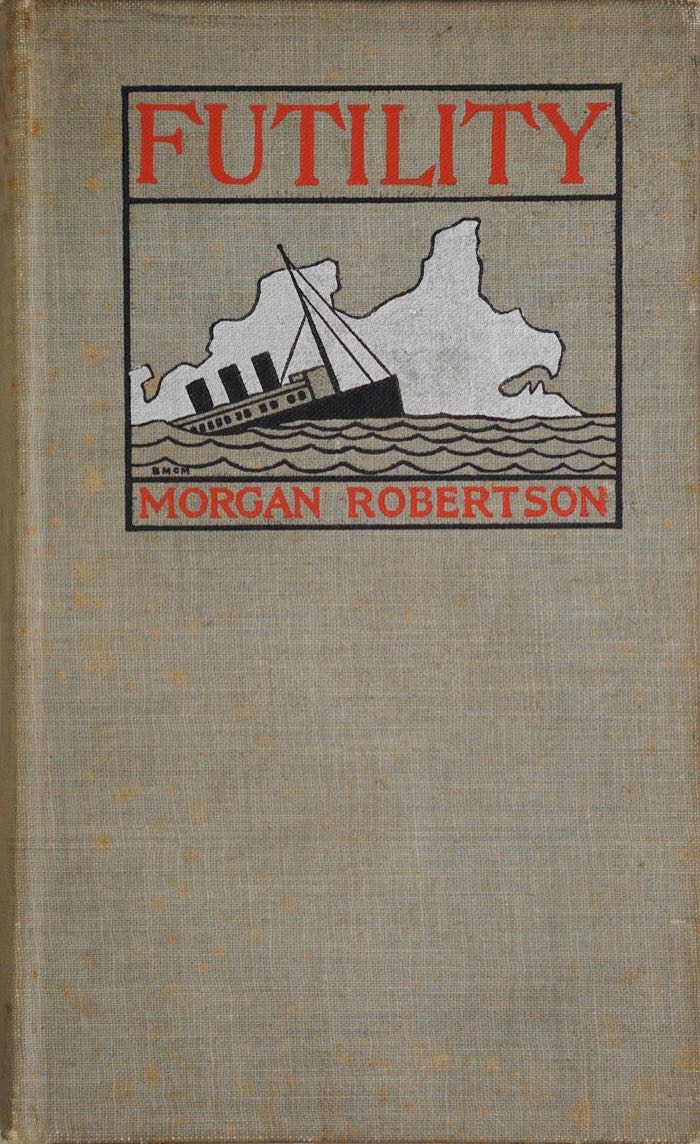Futility, or The Wreck of the Titan
Reviewed date: 2011 Apr 1
Rating: 2
70 pages
In 1898, fourteen years before the ocean liner Titanic struck an iceberg and sank in the North Atlantic, Morgan Robertson published a story that describes a disaster eerily similar to what occurred in April 1912. Check out these similarities.
- Titan/Titanic,
- the largest ocean liner in the world,
- considered unsinkable,
- struck an iceberg and sank
- in the North Atlantic
- in April
- while trying to set the trans-Atlantic speed record.
- The ship did not have enough lifeboats,
- so more than half the people on board died.
Freaky, huh? Only, not so much so. These similarities are not nearly as significant when taken in context.
- Titan/Titanic - In 1898 White Star Line had plans for a ship named Olympic and had already announced a future ship to be named Gigantic. It's not a stretch to guess that Titanic would come soon. Robertson picked the name Titan because it was obvious and recognizable.
- the largest ocean liner in the world - Yes, because the ship companies of the day were competing to build the world's largest ship.
- considered unsinkable - Actually, Titanic wasn't considered any more unsinkable than other ocean liners of the day. The unsinkable idea came about only after Titanic sank.
- struck an iceberg and sank - Icebergs were a common danger faced by ocean liners, and considerable attention was given to avoiding them. Iceberg disaster scenarios were in the public consciousness.
- in the North Atlantic - Any ship traveling from America to Britain will sail the North Atlantic.
- in April - April is winter, i.e., iceberg season.
- while trying to set the trans-Atlantic speed record - Cunard and White Star Line competed with each other to set the trans-Atlantic speed record, so it would be a surprise if this thought did not occur to Robertson while writing his book. But there is little evidence to suggest that Titanic was actively trying to set the speed record, although in Robertson's story Titan certainly was.
- The ship did not have enough lifeboats - None of the ocean liners of the day carried enough lifeboats for all the passengers. It's like complaining that today, a jumbo jet doesn't carry enough parachutes for everyone on board. Titanic carried 20 boats, more than the legal minimum. Titan carried 24, the minimum. In Titan's case, it was irrelevant: the ship sank so quickly that only two lifeboats manged to launch.
- so more than half the people on board died - On Titanic, about a third of the people on board survived. On Titan, fewer than 40 people out of about 2500 survived.
Other differences:
- On Titanic, Captain Smith and First Officer Murdoch went down with the ship. In Robertson's book, the captain and first officer survived, and later conspired to conceal their gross negligence in causing the accident.
- Titanic scraped an iceberg that buckled her starboard hull, breaching several water compartments. The ship took hours to sink. Titan ran up onto a gently sloped iceberg, with the ship's momentum carrying her completely out of the water. She tipped over onto her starboard side, whereupon the ship's boilers broke off their floor mounts and crashed through the hull, creating large gaping holes. Titan then slid back into the ocean and sank immediately.
- The loss of life on Titanic was due primarily to an insufficient number of lifeboats. Titan also carried too few lifeboats, but this was irrelevant: the ship sank so quickly that only two out of 24 lifeboats were launched.
- Titanic sank on her maiden voyage from Britain to America. Titan was on her third crossing, heading from America to Britain.
- Titanic was powered by three huge propellers. Titan was powered similarly, except she also had sails for a little extra boost.
At any rate, Robertson treats the sinking of the great ship Titan briefly, despite its loss being a central point in the short novel. Most of the novel centers around the action of John Rowland, a deck hand who ends up stranded on the iceberg that Titan strikes. He rescues a young girl, fights and kills a polar bear armed with only a pocketknife, and finally--despite being an atheist--cries out to God for mercy for the sake of the little girl. Rowland is rescued and taken to London, where he meets the book's villain: Mr. Meyer, the evil Jewish financer who insured Titan. Meyer uses all his evil Jewish tricks to try to weasel out of paying the claim, but Rowland--as the only honest witness to the accident--opposes him and Meyer is stuck with the bill.
I guess in 1898 it was acceptable and completely normal that the villain should be an unscrupulous, moneygrubbing Jew.
